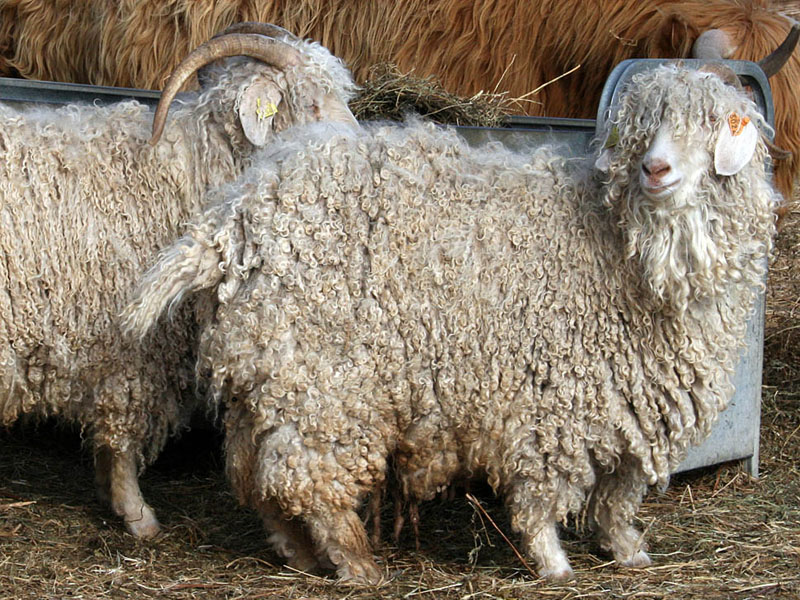Mohair
Variety: Mohair
Fibre Origin: Angora goat.
Provenance: Tibet, India, Turkey.
Characteristics: Softness, natural shine, light touch and exceptional durability.
Famous for its luxurious texture and exceptional properties, mohair has been prized for centuries around the world.
We delve into the history of mohair, explore its natural characteristics, discover its various applications and reveal the many benefits it offers.
HISTORY
Mohair is a type of wool that has an illustrious history dating back to ancient times. Its origins can be traced back to the Himalayan regions of Tibet and India. It is believed that nomadic tribes, known as the Persians, were the first to domesticate Angora goats, which produced the prized Mohair fibre.
Over time, this knowledge spread through trade routes to the Middle East and later reached Europe in the 16th century.
During the Victorian era, mohair gained immense popularity, becoming a symbol of luxury and prestige. Its lustre, softness and durability made it highly sought after by royalty and the elite. Even today, mohair continues to occupy an important place in the world of fashion and the high-end textile industry.
NATURAL PROPERTIES
Mohair stands out for its unique natural properties. Firstly, its lustrous appearance gives it a seductive sheen that makes it visually captivating. Secondly, mohair is extraordinarily light, which increases its comfort and versatility. In addition, this extraordinary fibre is highly durable and crease-resistant, ensuring longevity in a variety of applications.
The most outstanding feature of mohair is its exceptional insulating properties. It effectively regulates temperature, providing warmth in colder climates and remaining breathable in warmer seasons. This makes it an ideal choice for year-round garments.
USES OF MOHAIR
Mohair's versatility knows no bounds, as it finds applications in a variety of industries. Fashion designers love mohair's ability to add elegance and sophistication to their creations. It is commonly used in the manufacture of exquisite evening gowns, suits and coats, adding a touch of luxury to any outfit.
In interior design, Mohair fabric plays a prominent role in furniture upholstery, adding comfort and a touch of opulence to living spaces. Its durability ensures that Mohair upholstered furniture stands the test of time.
In addition, Mohair's exceptional insulating properties have led to its use in the production of blankets and bedspreads, ensuring a cosy and comfortable experience on cold nights.
ADVANTAGES OF MOHAIR
In addition to its visual appeal and versatility, mohair offers a number of benefits to those who use it:
- Sustainability: Mohair is an environmentally friendly fibre, a renewable and biodegradable resource, making it a sustainable choice for conscientious consumers.
- Hypoallergenic: Unlike some synthetic fibres, mohair is naturally hypoallergenic, making it an excellent choice for people with sensitive skin.
- Odour resistant: Mohair's unique structure makes it resistant to odour retention, keeping garments and fabrics fresher for longer.
- Crease recovery: Due to its natural elasticity, Mohair fabrics have excellent crease recovery, reducing the need for frequent ironing.
- Colour Retention: Mohair dyes very well, resulting in vivid, long-lasting colours.Conclusión



Users Reviews